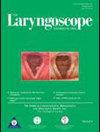Washing Illness Away: A Systematic Review of the Impact of Nasal Irrigation and Spray on COVID-19
Abstract
Objective
Nasal irrigation is a common treatment for sinonasal disorders; however, it is unknown if it can reduce SARS-CoV-2 nasopharyngeal viral load (NVL). This systematic review investigated the efficacy of nasal irrigation with saline, povidone iodine (PVP-I), and intranasal corticosteroids (INCS) at reducing SARS-CoV-2 NVL and transmissibility.
Data Sources
Databases including Embase, MEDLINE, Web of Science, and ClinicalTrials.gov.
Review Methods
A systematic review was completed with pre-defined search criteria using keywords related to nasal irrigation and COVID-19 from 1946 through January 2024. This review followed PRISMA reporting guidelines and was registered on PROSPERO. Only in-vivo studies testing nasal irrigation with either saline, PVP-I, or INCS for reducing NVL were included.
Results
Nine out of ten studies on saline-based solutions reported positive effects in reducing NVL, with benefits noted in earlier time to negative nasopharyngeal PCR and a greater decline in NVL during early study time points, compared with controls. Isotonic and hypertonic saline mediums were found to be effective with three studies demonstrating enhanced efficacy with additives. Four out of seven studies on PVP-I showed a positive effect on reducing NVL, but results were heterogenous. Four studies demonstrated reduction of transmission with saline or PVP-I. No studies were found on INCS.
Conclusion
Saline nasal irrigation showed the best efficacy in reducing SARS-CoV-2 NVL. Additives to saline may have a clinical benefit, but further studies are needed to elucidate their isolated impacts on NVL. Data on PVP-I is inconclusive and further studies are warranted to determine the ideal concentration for irrigation. Laryngoscope, 135:517–528, 2025


 求助内容:
求助内容: 应助结果提醒方式:
应助结果提醒方式:


